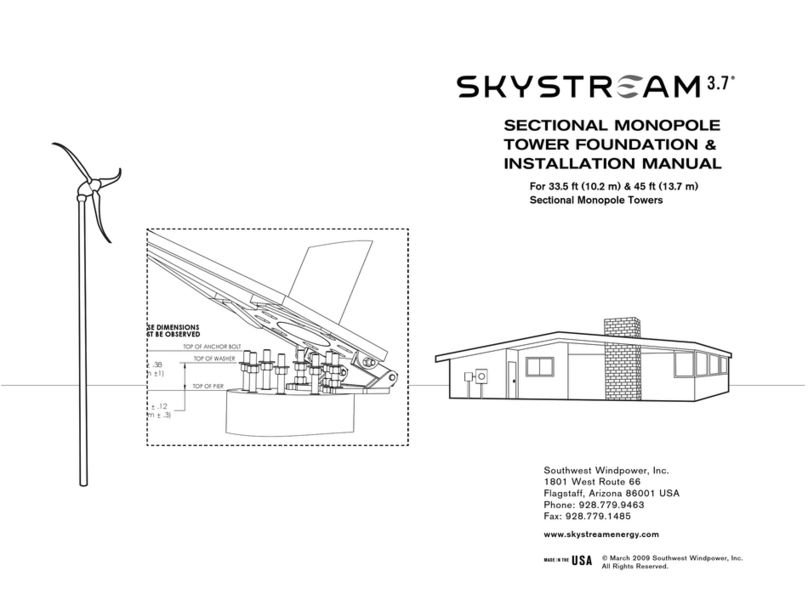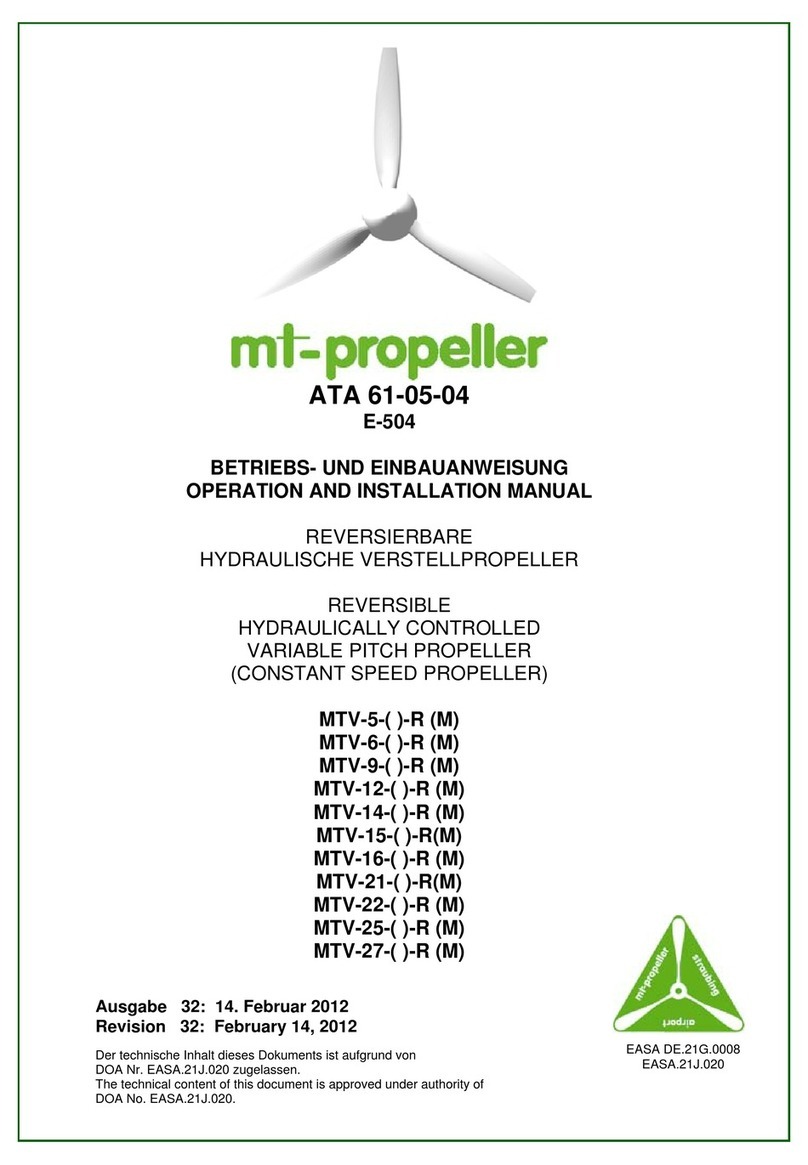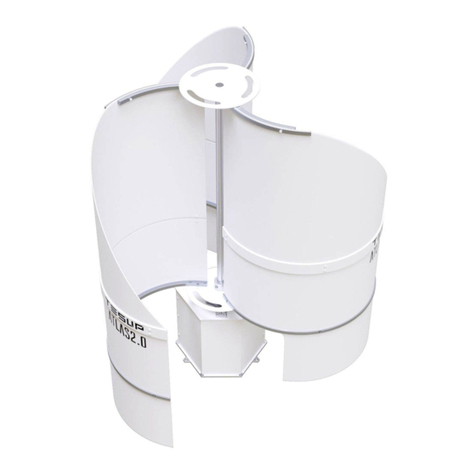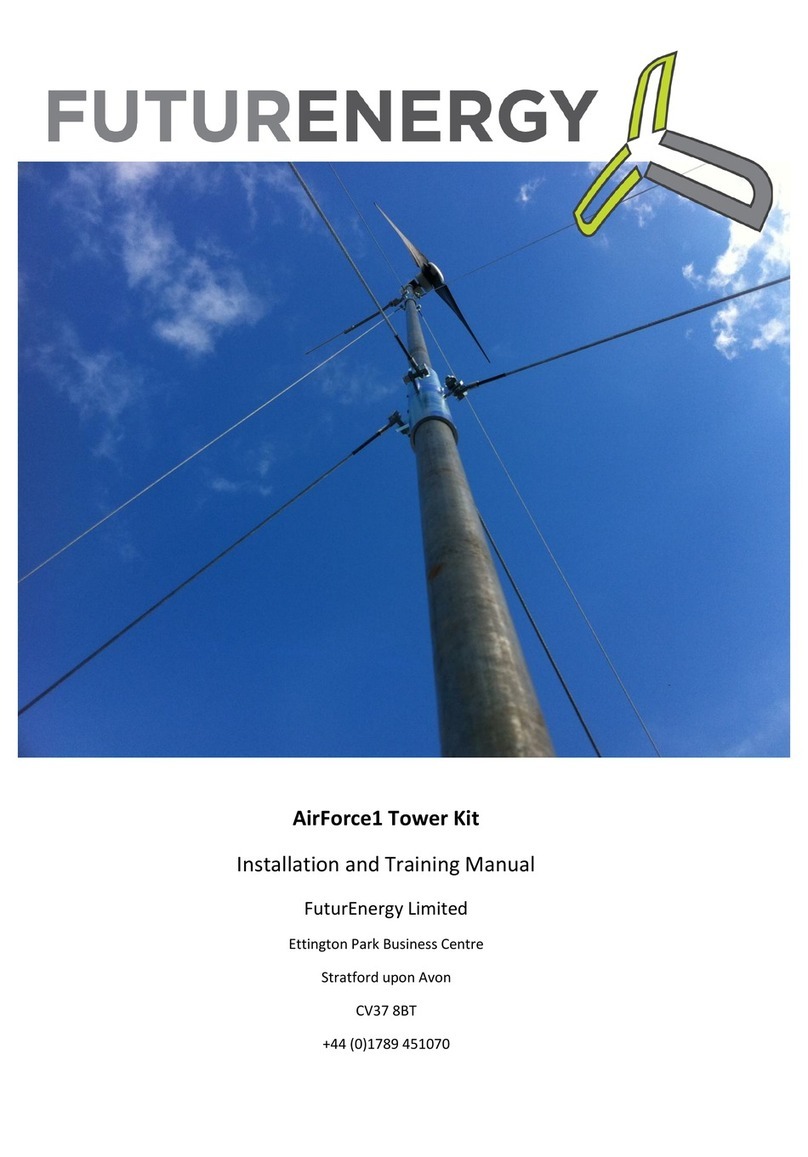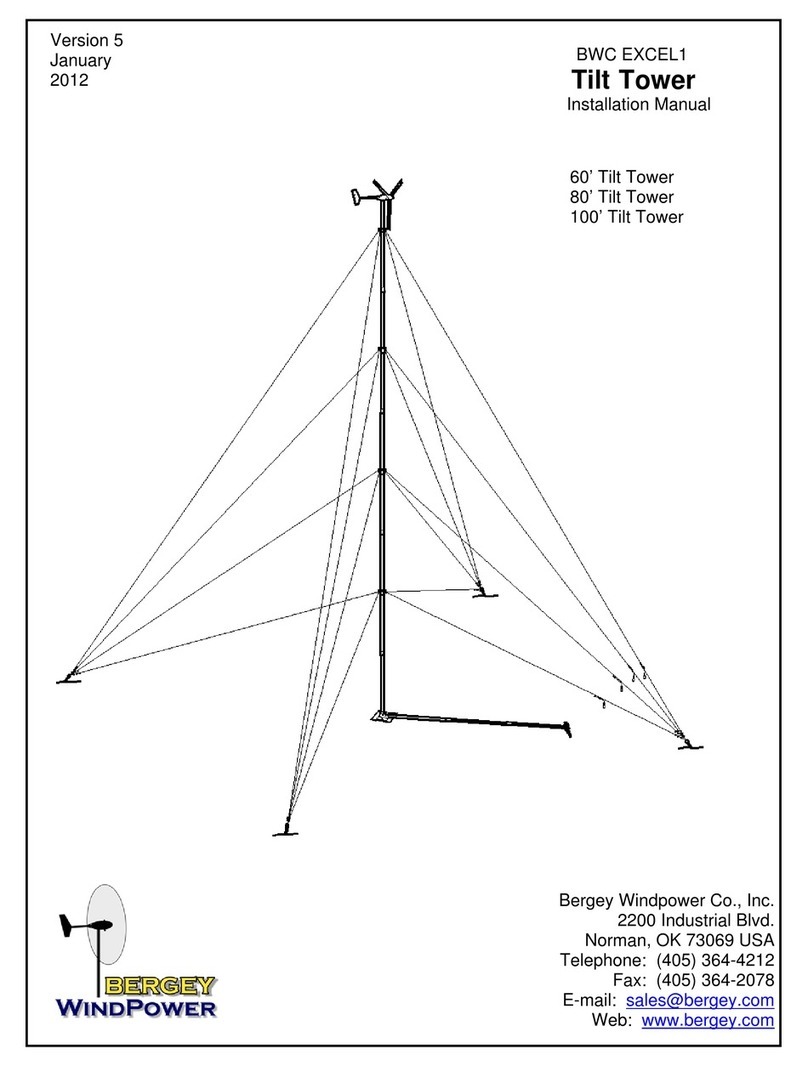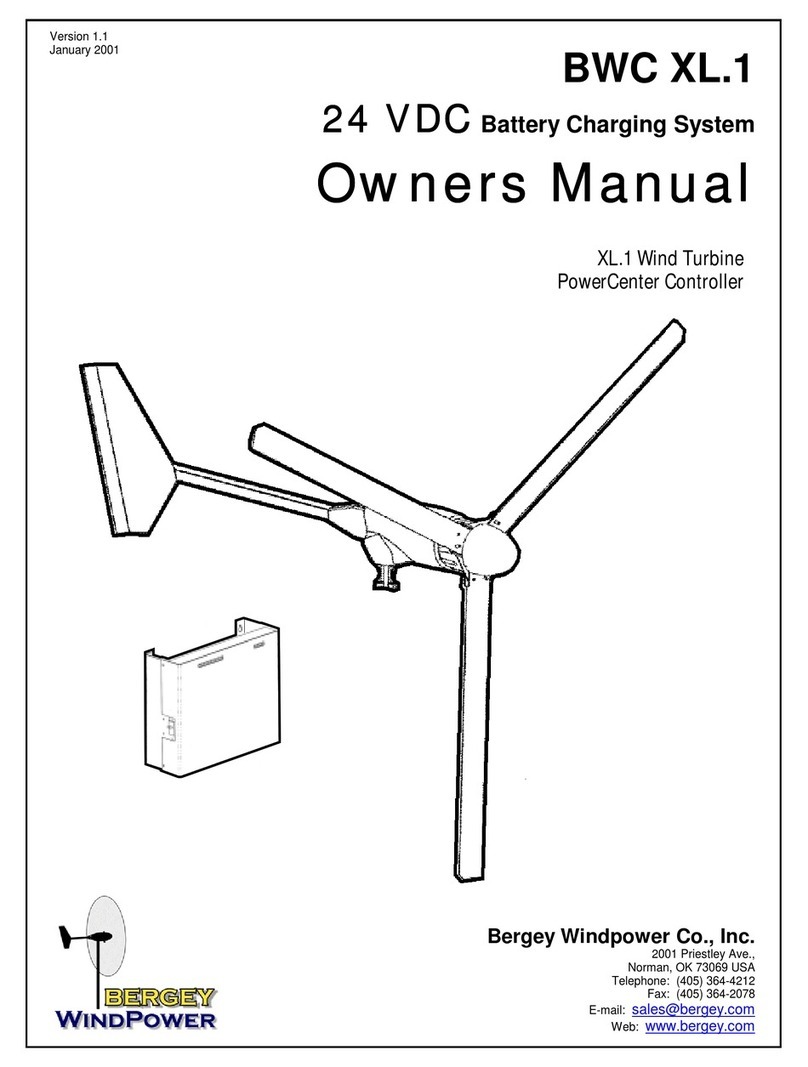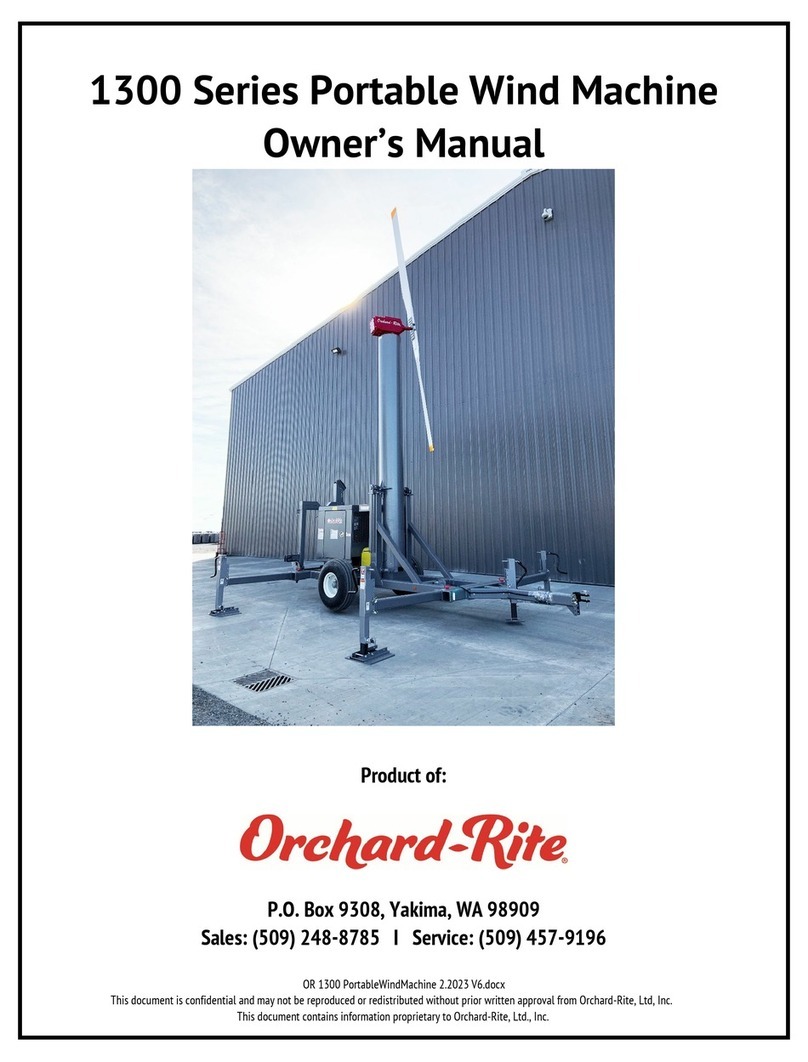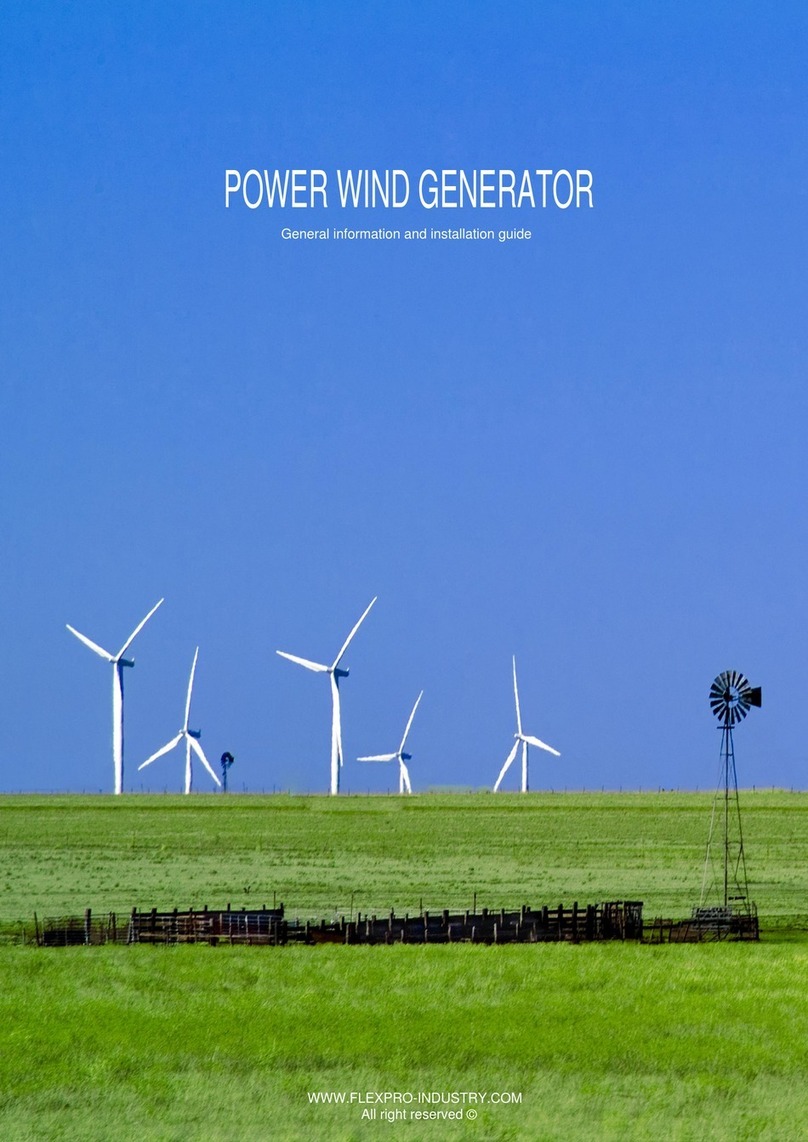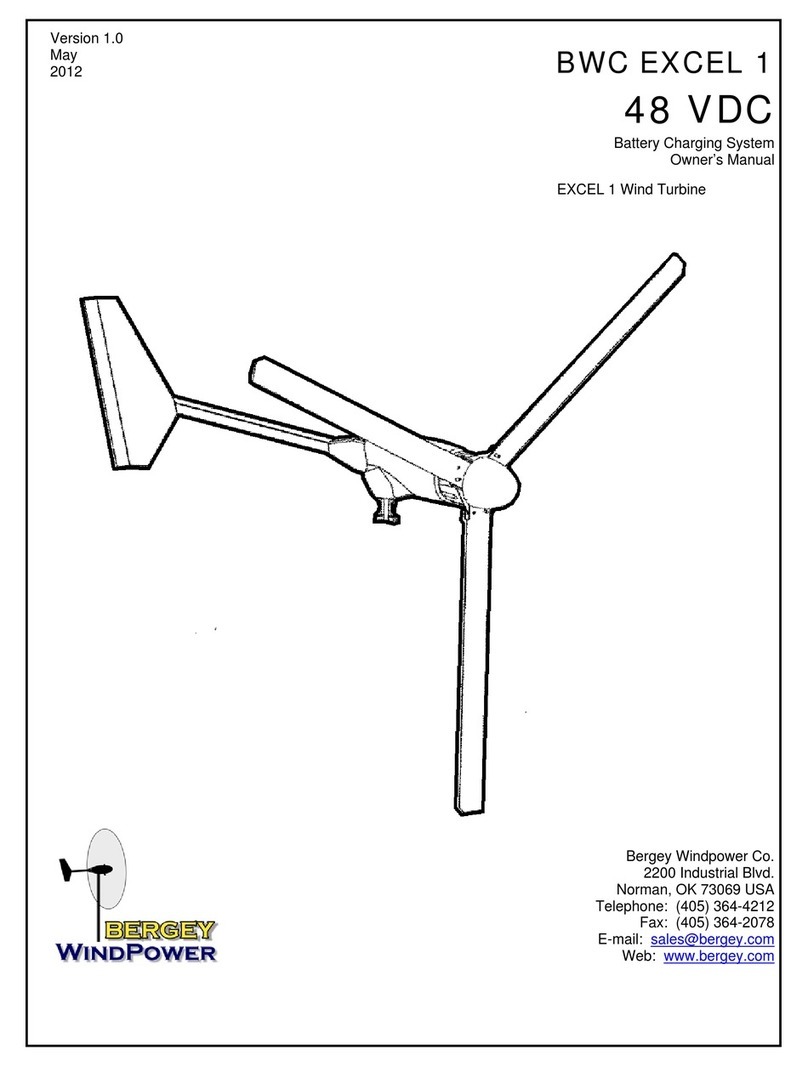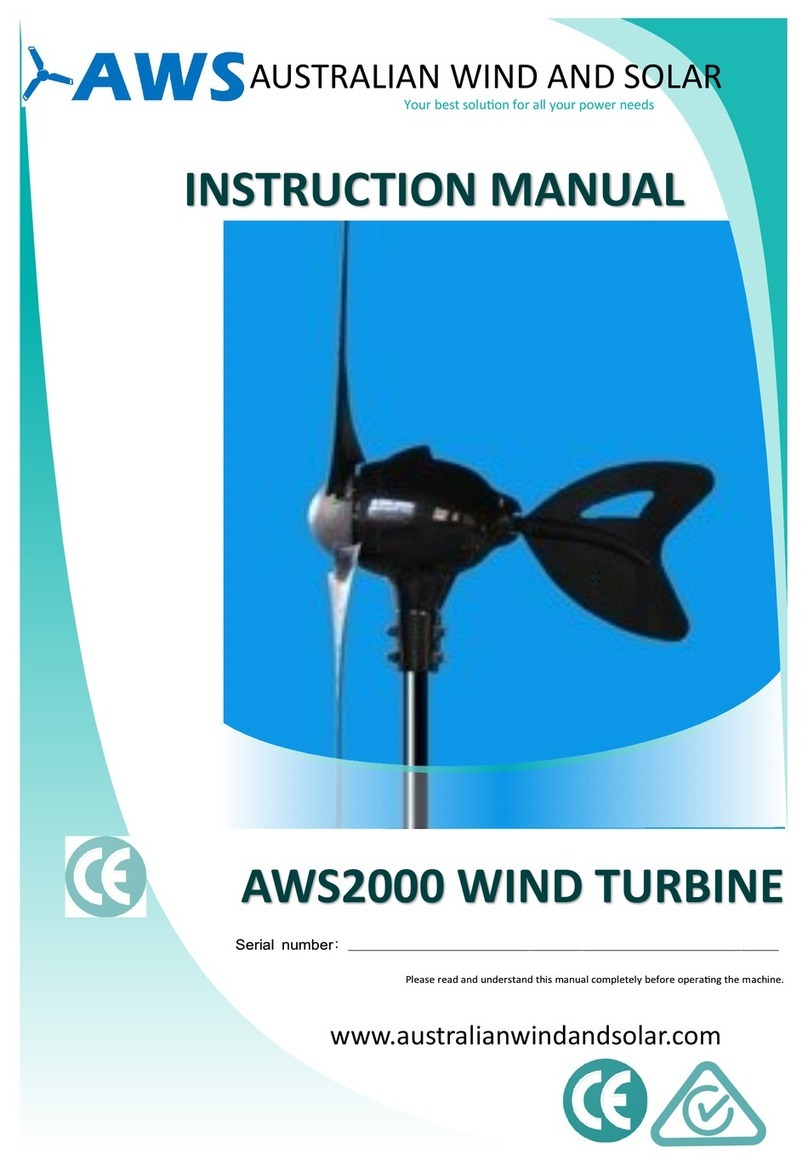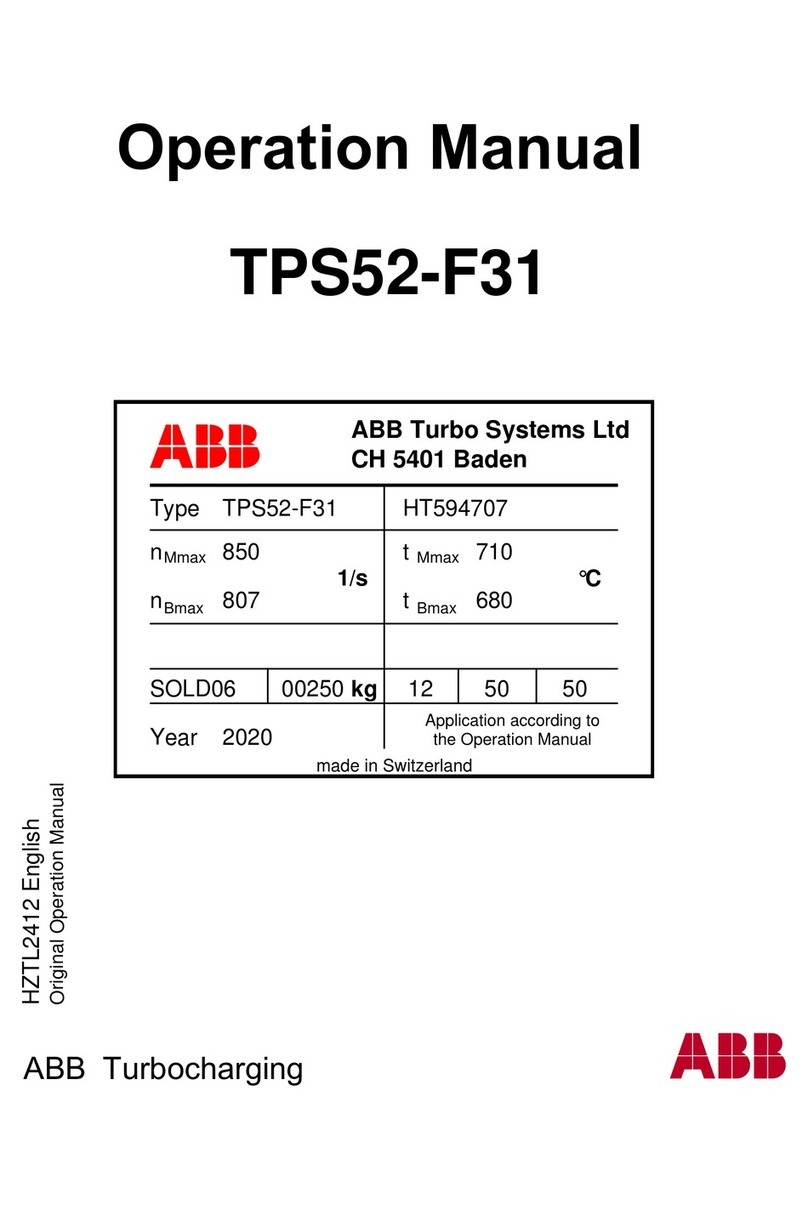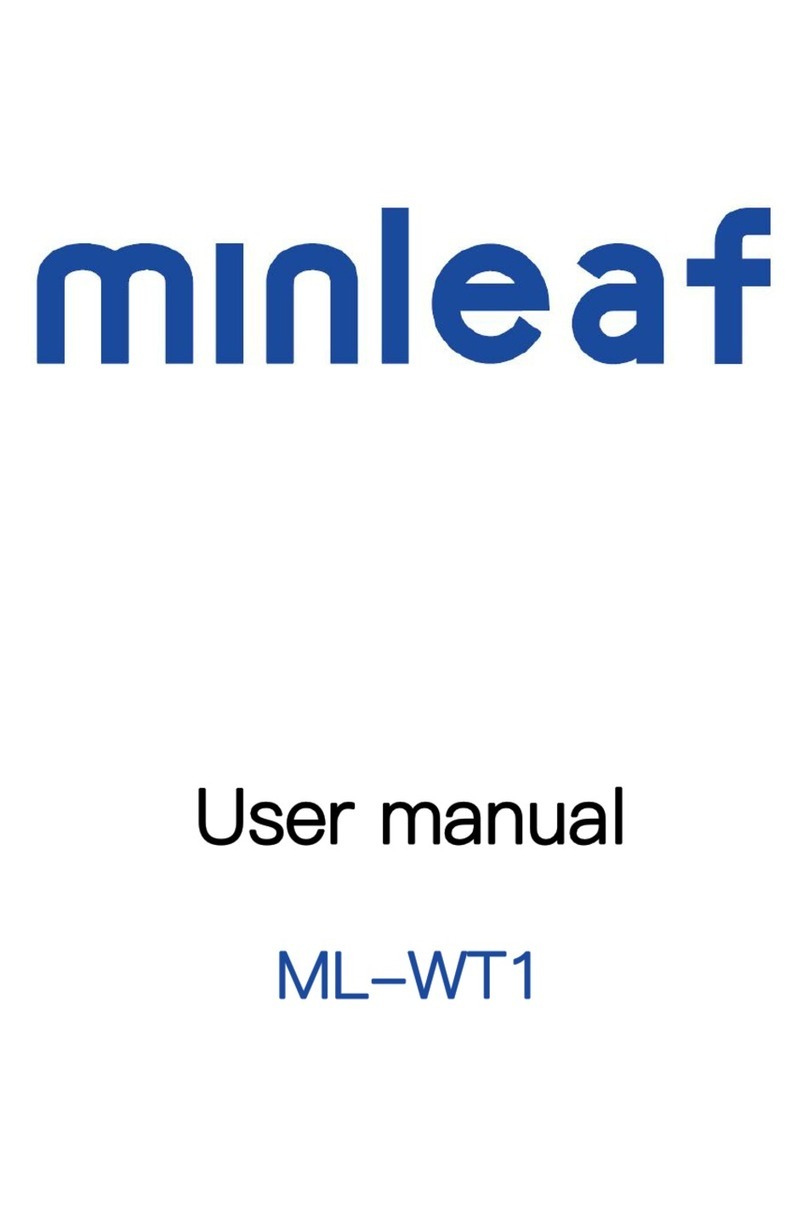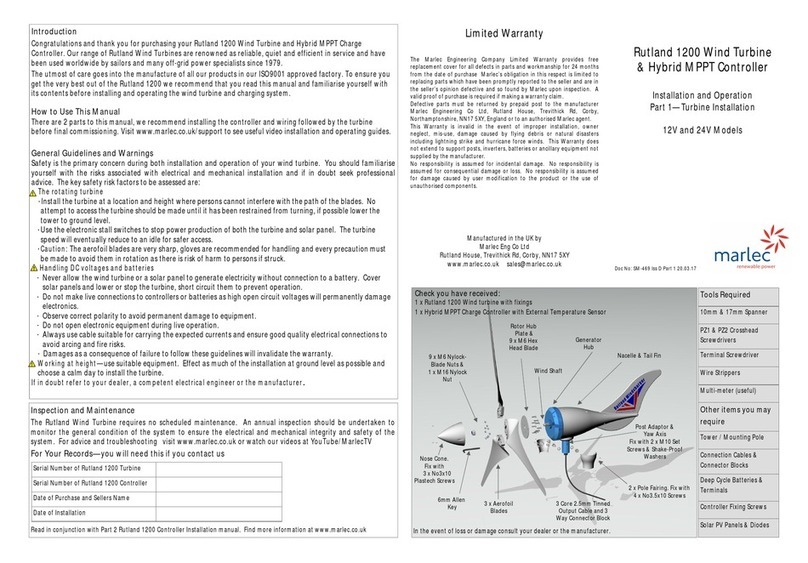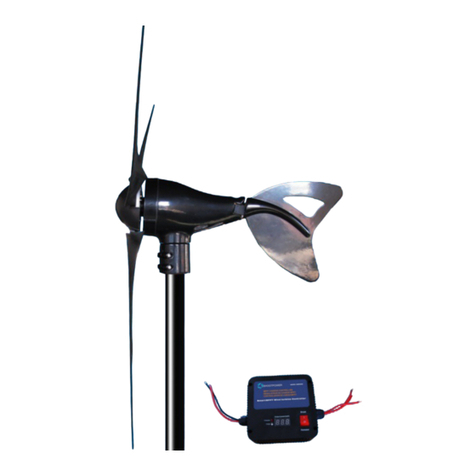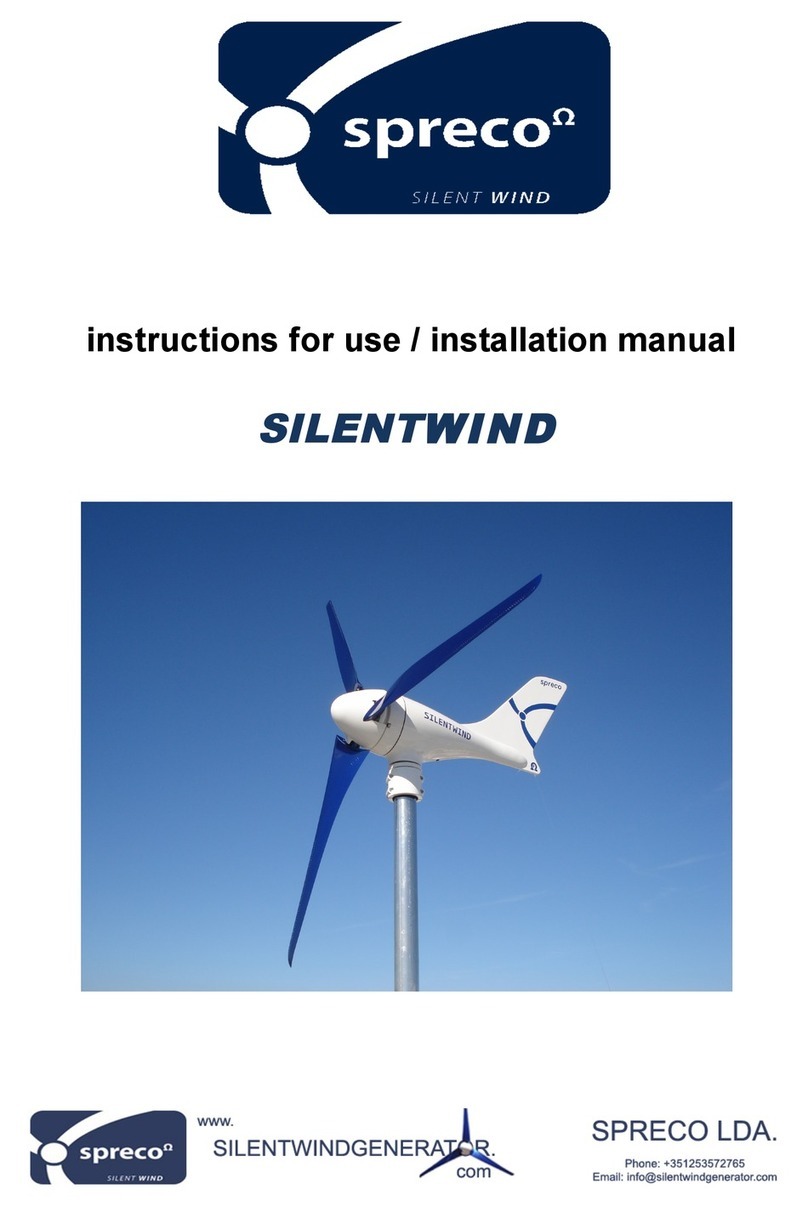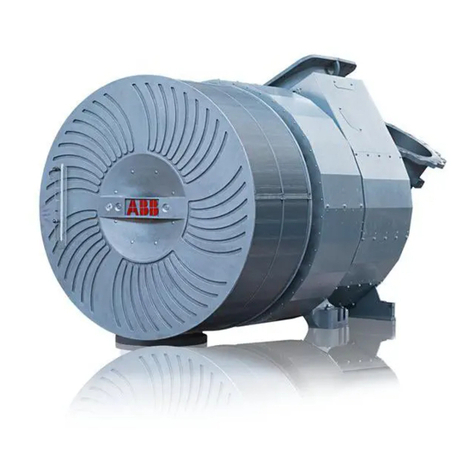Owner’s Manual BWC EXCEL 10 Turbine
Page 9
IV. SYSTEM OPERATION
A. NORMAL OPERATION
The Bergey EXCEL 10 produces utility compatible power in the form of 240VAC, 60 Hz,
single phase electricity (other voltage options are available). It is connected through the
Powersync II inverter to the utility distribution network in the same manner as household
appliances. When the wind speed is too low to operate the wind turbine, all of the
electrical power needed for the home will be supplied by the utility company. During
these idle periods the Powersync II will consume approximately 0.3 kilowatt-hours of
electricity per day.
When the system begins producing power, the amount of power which must be
purchased from the utility is reduced by an amount equal to the output of the wind
system. From the perspective of the utility company the wind system output reduces
the electrical load they have to supply, just as if you turned off lights and appliances.
The output of the wind system fluctuates with the speed of the wind so the
instantaneous amount of electricity being saved will be constantly changing. Quite often
your home will be served simultaneously by the utility and your Bergey wind turbine.
When the output of the wind system exceeds the power requirements of the house the
excess electricity is sold back to the utility. Both the consumer’s right to interconnect a
wind system and the utilities obligation to purchase excess power are prescribed by
federal law (PURPA, Section 210). The amount you will be credited or paid for this
excess production varies state-to-state and sometimes utility-to-utility. If your utility
company offers “net metering” then your meter is allowed to turn backwards so that you
essentially bank energy, at full value, for less windy periods. This banking can be done
over a month or over a year depending on the policy of your state or your utility. If you
do not get “net metering” then you will have a second utility meter to register excess
production and your utility will pay or credit you for this, typically at less than full value.
If your utility experiences an outage (blackout) the wind system will cease to produce
power so that it does not present an electrical safety hazard to utility repair crews.
Although the wind turbine will continue to operate, no power will be transferred from the
Powersync II inverter to your circuit breaker panel. When utility power is restored, the
Powersync II will automatically return the wind system to full working status following a
five minute delay and then a two minute countdown. These time delays are dictated in
the UL standards required by the utilities.
The rotor of the EXCEL 10 should begin to rotate when the wind speed reaches
approximately 8 mph (3.6 m/s). Once started, the rotor may continue to turn in winds
below 5 mph (2.2 m/s), but the system will not be producing power below this wind
speed.
